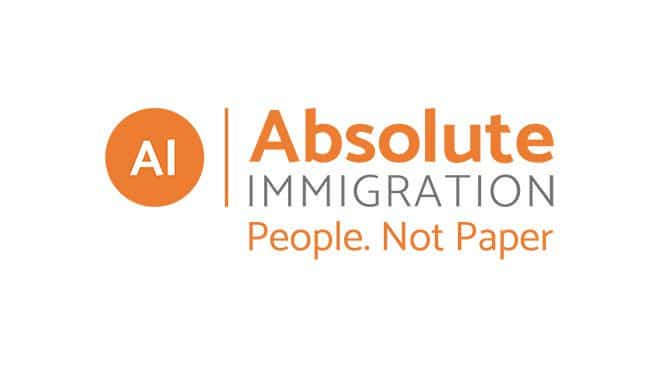JobKeeper Payments
JobKeeper Extended until March 2021 – but still not available to temporary visa holders
With Melbourne returning to lockdown and feared spikes in COVID-19 in Sydney and elsewhere, many have let out a sigh of relief when the Government announced JobKeeper payments would be extended until March 2021.
While this comes as a continued support to many, there will be some changes to the payments and requirements, and it still does not cover temporary visa holders.
Key changes for businesses:
- JobKeeper will be extended through to 28 March 2021
- Businesses and not-for-profits seeking to claim JobKeeper payments will be required to reassess their eligibility for the JobKeeper extension
- Businesses and not-for-profits will need to demonstrate that they have met the relevant continuing decline in turnover test in both of June and September quarters to be eligible for JobKeeper from 28 September 2020 to 3 January 2021
- Businesses and not-for-profits will need to further reassess their eligibility in January 2021 for the period from 4 January to 28 March 2021
- Businesses and not-for-profits will need to demonstrate that they have met the relevant continuing decline in turnover test in each of the previous three quarters to remain eligible for the March 2021 quarter
JobKeeper payment rate:
- From 28 September 2020 to 3 January 2021, the payment rate will be $1,200 per fortnight for all eligible employees who, in the four weeks before 1 March 2020, were working in the business or not-for-profit for 20 hours or more a week on average and for business participants who were actively engaged in the business for more than 20 hours per week.
- From 28 September 2020 to 3 January 2021, the payment rate will be $750 per fortnight for employees who were working in the business or not-for-profit for less than 20 hours a week on average and business participants who were actively engaged in the business less than 20 hours per week in the same period.
- From 4 January 2021 to 28 March 2021, the payment rate will be $1,000 per fortnight for all eligible employees who in the four weeks before 1 March 2020, were working for 20 hours or more a week on average and for business participants who were actively engaged in the business for more than 20 hours per week.
- From 4 January 2021 to 28 March 2021, the payment rate will be $650 per fortnight for employees who were working for less than 20 hours a week on average and business participants who were actively engaged in the business for less than 20 hours per week in the same period.
Find out more about the payment extension here.
JobKeeper ATO update 27 April 2020
Paying your eligible employees
You need to pay all your eligible employees at least the minimum amount of $1,500, even if you re-hire them or they earn less than this per fortnight. You cannot pay your employees less than $1,500 per fortnight and keep the difference. You will not be eligible for the JobKeeper payment if you pay your nominated employee less than $1,500 per fortnight.
How to pay
You need to re-start or continue to pay all your eligible employees at least $1,500 a fortnight in line with your existing pay cycle through your existing payroll solution.
When to pay
You should pay your employees for each JobKeeper fortnight you plan to claim for. The first fortnight is from 30 March – 12 April and each JobKeeper fortnight follows after that.
For the first two fortnights (30 March – 12 April, 13 April – 26 April), we will accept the minimum $1,500 payment for each fortnight has been paid by you even if it has been paid late, provided it is paid by you by 8 May. This means that you can make two fortnightly payments of at least $1,500 per fortnight by 8 May, or a combined payment of at least $3,000.
If you usually pay your employees less frequently than fortnightly, the payment can be allocated between fortnights in a reasonable manner. For example, if you pay your employees on a monthly pay cycle, your employees must have received the monthly equivalent of $1,500 per fortnight.
If your eligible employees change or leave your employment, you need to notify us.
How much to pay
You must pay the minimum $1,500 (before tax) to each eligible employee per fortnight to claim the JobKeeper payment for that fortnight.
If your eligible employees earn less than $1,500 (before tax) per fortnight, you must pay them at least $1,500 for each fortnight to claim the JobKeeper payment. This is a ‘top up’ of their salary or wages and will ensure they remain eligible.
You cannot pay your employees less than $1,500 per fortnight and keep the difference. You will not be eligible for the JobKeeper payment if you pay your nominated employee less than $1,500 (before tax) per fortnight.
If your eligible employees earn more than $1,500 per fortnight, you should continue to pay them their regular salary or wages. However, you will only receive $1,500 for each eligible employee. Any amount you pay above $1,500 per fortnight is not subsidised by the JobKeeper payment.
If an employee was stood down after 1 March 2020, you can start paying them $1,500 per fortnight to qualify for the JobKeeper payment for that employee.
If an employee ceased working for you after 1 March 2020, you can re-engage them and pay them at least $1,500 per fortnight. You will only be eligible to claim for the fortnights after you re-engaged your employee.
If you usually pay your employees monthly, the payment can be allocated between fortnights in a reasonable manner. For example, if you pay your employees on a four-week pay cycle, your employees must have received at least $3,000 for every four-week period.
Tax consequences
All JobKeeper payments are assessable income of the business that is eligible to receive the payments. The normal rules for deductibility apply in respect of the amounts your business pays to its employees where those amounts are subsidised by the JobKeeper payment.
The JobKeeper payment is not subject to GST.
Superannuation guarantee
New rules are being introduced by the government with the intention to not require super guarantee to be paid on additional payments that are made to employees as a result of JobKeeper payments. We will update this information once legislation or regulations are in place.
What you can’t do
You cannot claim the JobKeeper payment on behalf of employees who were not paid at least $1,500 (before tax) during each JobKeeper payment period.
You cannot claim the JobKeeper payment in advance. The JobKeeper payment is a reimbursement from us to an employer in arrears, and cannot be paid in advance in any circumstances.
Examples
Example 1: Employer with employees on different wages
Adam owns a real estate business with two employees. The business is still operating at this stage but Adam expects that GST turnover will fall by more than 30% in in the coming months. The employees are:
- Anne, who is a permanent full-time employee on a salary of $3,000 (before tax) per fortnight and who continues working for the business, and
- Nick, who is a permanent part-time employee on a salary of $1,000 (before tax) per fortnight and who continues working for the business.
Adam is eligible to receive the JobKeeper payment for each employee, which would have the following benefits for the business and its employees.
The business continues to pay Anne her full-time salary of $3,000 (before tax) per fortnight, and the business will receive $1,500 per fortnight from the JobKeeper payment to subsidise part of the cost of Anne’s salary.
The business continues to pay Nick his $1,000 (before tax) per fortnight salary and an additional $500 per fortnight before tax, totalling $1,500 (before tax) per fortnight. The business receives $1,500 per fortnight from the JobKeeper payment, which will subsidise the cost of Nick’s salary.
Adam can obtain nomination forms from each of Anne and Nick, enrol in the JobKeeper Payment scheme, and enrol for JobKeeper payments by providing the ATO with details about his eligible employees. In addition, Adam is required to advise his employees that he has nominated them as eligible employees to receive the payment. Adam will provide information to the ATO on a monthly basis and receive the payment monthly in arrears.
Example 2: Employer with employees who have been stood down without pay
Zahrah runs a beauty salon in Melbourne. Ordinarily, she employs three permanent part-time beauticians, but the government directive that beauty salons can no longer operate has required her to shut the business. As such she has been forced to stand down her three beauticians without pay.
Zahrah’s turnover will likely fall by more than 30%, so she can be eligible to enrol for the JobKeeper payment for each employee, and pay at least $1,500 (before tax) per fortnight to each of her three beauticians for the period up to 27 September.
Zahrah is required to advise her employees that she has nominated them as eligible employees to receive the payment.
If Zahrah’s employees have already started receiving income support payments like the JobSeeker payment when they receive the JobKeeper payment, they should advise Services Australia of their change in circumstances online at my.gov.au or by phone to avoid incurring a debt that they will need to repay.
If you’re looking for more accounting advice during COVID-19 visit shinewing.com.au/covid-19






